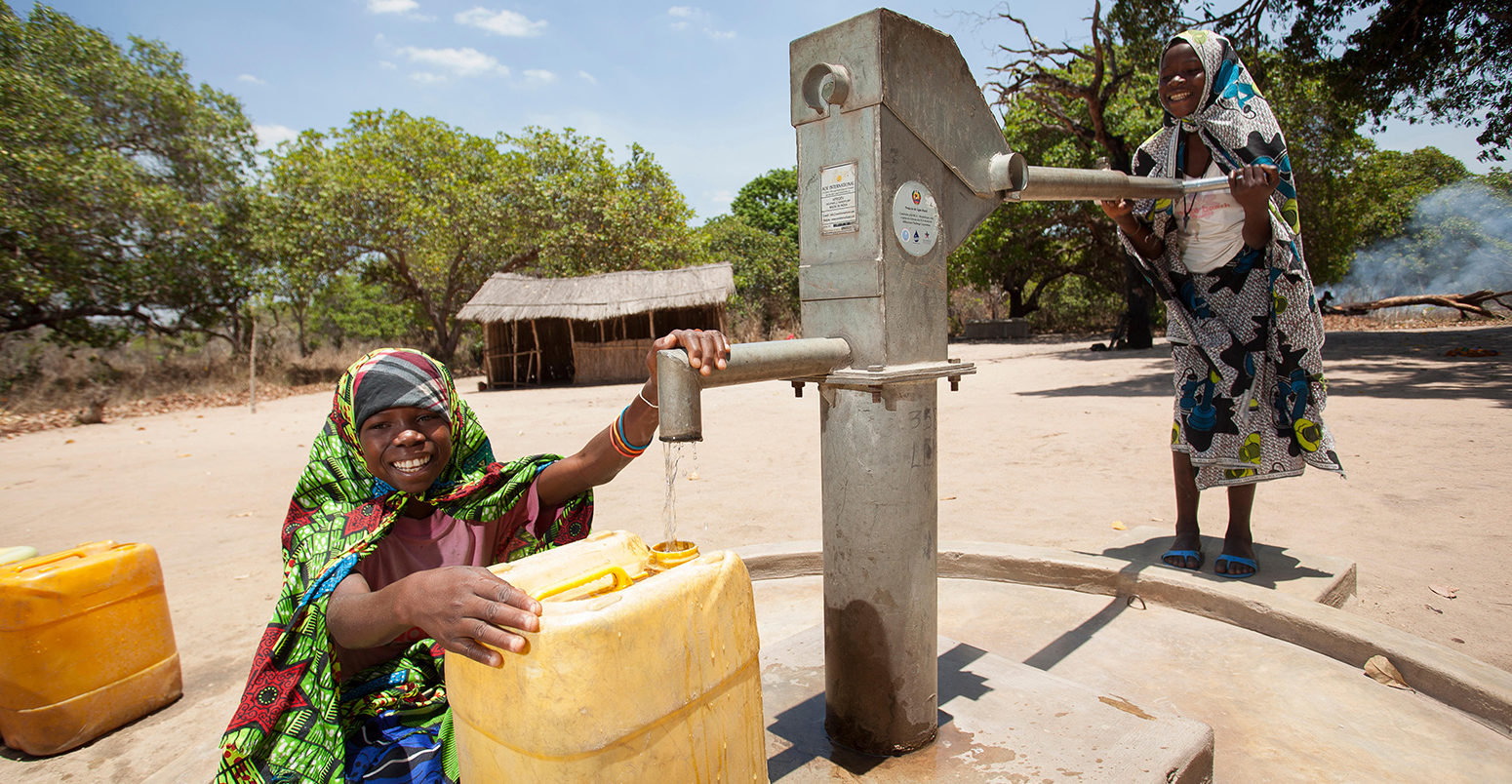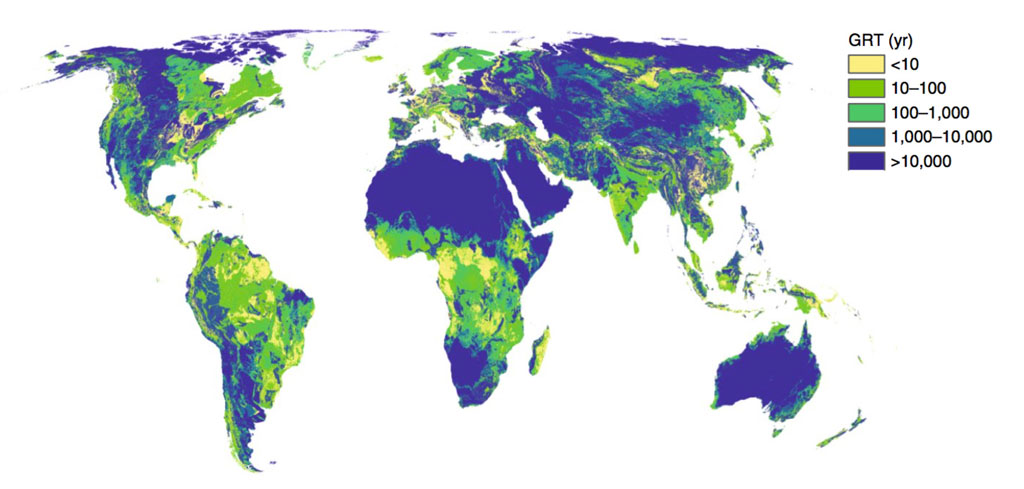
Climate change’s impact on groundwater could leave ‘environmental timebomb’
Daisy Dunne
01.21.19Daisy Dunne
21.01.2019 | 4:00pmOver the next 100 years, the full impact that climate change is having on groundwater resources will become apparent in half of the world’s aquifers, a study concludes.
The findings come from the first assessment of how long it could take groundwater to react to the impacts of climate change in different parts of the world.
The regions most “sensitive” to changes in climate include humid and wet areas, such as the Amazon, Indonesia and parts of central Africa, the research shows. In some of these areas, it could take less than 10 years for climate change to fully impact groundwater flows.
In dry, arid parts of the world, groundwater could take longer to react to climate change and other stresses, such as land-use change and pumping.
However, while this delayed reaction could provide some respite to water-stressed nations, in the long-term, it could be an “environmental timebomb”, the lead author tells Carbon Brief.
Waterlogged
Groundwater – water held underground in soil or between rocks – makes up the world’s largest source of freshwater and is relied on by more than two billion people.
Water enters the ground when rain and moisture is soaked up by soil and then pulled downwards by gravity. This is called groundwater “recharge”.
Once in the ground, groundwater naturally fills “aquifers” – layers of porous rocks and sediment that can hold water. These aquifers are used as a source of drinking and irrigation water.
Eventually, groundwater will flow back out into streams, lakes, rivers and oceans. This step of the cycle is called groundwater “discharge”. Humans can artificially increase discharge through pumping.
Research suggests that climate change could impact the recharge process. This is because warming is expected to drive changes to global rainfall patterns, affecting the amount of water sinking into the ground.
The recharge process can also be impacted by land-use change, such as the conversion of forests into pastureland. This is because different types of vegetation send different amounts of moisture back to the atmosphere (by evapotranspiration) – changing the amount of water that becomes groundwater recharge.
But the time it takes for decreases in recharge to translate into decreases in discharge – or the amount of freshwater flowing into rivers and streams – has not been well studied, says Dr Mark Cuthbert, a scientist from the School of Earth and Ocean Sciences and the Water Research Institute at Cardiff University. This reaction time is known as the “groundwater response time”. He tells Carbon Brief:
“There’s a time-lag between changing the recharge and changing the ‘baseflow’ rate of streams. Before our study there had been some local estimations of groundwater response time for individual aquifers which range by several orders of magnitude. However, no one has before mapped the groundwater response time globally and at high resolution – so, before now, there wasn’t a general appreciation of what the spatial distribution was like.”
(“Baseflow” is the rate of flow in a stream or river that comes from groundwater discharge, rather than, say, runoff from rainfall or melting snow.)
Mapping the underworld
The new study, published in Nature Climate Change, combined groundwater model results with global datasets of the planet’s ground and surface water to create a high-resolution map of groundwater response times around the world.
On the map, which is shown below, yellow shows areas where groundwater is likely to fully respond to stresses in less than 10 years, light green shows where the response time is 10-100 years, while dark green and blue indicate response times of 100 to more than 10,000 years.

Global distribution of “groundwater response times” (GRT). Yellow shows areas where groundwater is likely to respond to stresses in less than 10 years, light green shows where the response time is 10-100 years, while dark green and blue indicate response times of 100 to more than 10,000 years. Source: Cuthbert et al. (2019)
The map shows that the groundwater response times could vary greatly within continents, countries and regions, Cuthbert says.
Areas with the shortest groundwater response times include wet, humid regions, such the Amazon, the Congo basin and Indonesia, and low-lying regions, such as the Asian mega-deltas and the Florida Everglades.
This could be because, in these regions, the “water table” – the level below which the ground is saturated with water – is closer to the surface, Cuthbert says:
“If you’re in a really wet part of the world, like the Amazon basin, the water table rises to an extent where it meets the ground surface very regularly. When there’s a lot more feedback with the land surface, things get to a new equilibrium much quicker.”
This “equilibrium” occurs as groundwater compensates for less water soaking into soil by releasing less freshwater into streams, lakes and the ocean.
Aquifers in Europe and North America could also respond rapidly to water stresses, Cuthbert says. “A major aquifer in the UK – the Chalk aquifer – is one of those places.”
The Chalk aquifer in the Thames basin, which provides freshwater to much of southern and eastern England, could be particularly sensitive to stresses because it is made up of very permeable rock – meaning it reacts quickly to change, Cuthbert says.
Parched earth
In arid, dry regions, however, the time it takes groundwater to react to climate change could take much longer – even on the scale of thousands of years, he says. In these regions, the water table tends to be much deeper – making feedback with the land surface much less widespread. He tells Carbon Brief:
“The good thing about groundwater in dry places is it gives you a buffer through long dry periods. You’ve got this big groundwater store and because the groundwater response is often so slow, you can rely on it when there’s a particularly long drought.
“But the downside is, if you then start extracting lots of groundwater in dry parts of the world, the effects of the abstraction will also take a long time to have a full effect on reducing flows to rivers and springs. Things that are happening now, like climate change or pumping, might have really significant knock-on effects in the future.”
In many dry regions, such as Palestine’s Gaza Strip, aquifers are already under significant pressure. As a result of over-extraction, pollution and seawater incursion, just 4% of groundwater from Gaza’s coastal aquifer is fit to drink. In Tehran, Iran, over-extraction of groundwater is causing the land to sink at a rate of up to 25cm a year, research finds.
The findings shed new light on how climate change and other stresses could impact groundwater, says Prof Richard Taylor, a groundwater researcher from University College London who was not involved in the research. He tells Carbon Brief:
“The work marks a very important step in improving general understanding of how groundwater systems function – and especially their response times.”
Cuthbert, M. O. et al. (2019) Global patterns and dynamic of climate-groundwater interactions, Nature Climate Change, https://www.nature.com/articles/s41558-018-0386-4
-
Climate change's impact on groundwater could leave 'environmental timebomb'

